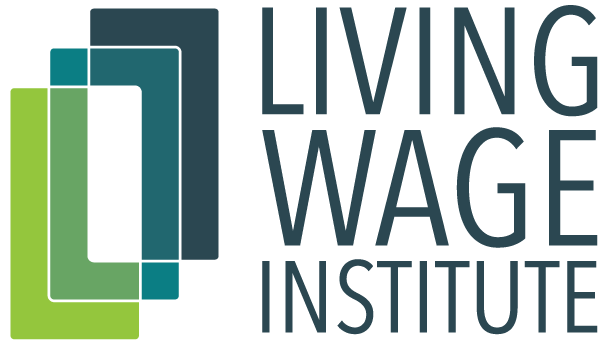



For further information, please visit the FAQs and Methodology pages or submit a question or request through the Contact page.
© 2024 Dr. Amy K. Glasmeier and the Massachusetts Institute of Technology
SIGN INThe monthly child poverty rate skyrocketed from 12.1 percent in December 2021 to 17 percent in January 2022. (Columbia University Poverty Center, 2022). The cause of this was the end of many pandemic-era policies, including the Child Tax Credit (CTC) expansion. Expansion of the Child Tax Credit was central to the 2021 American Rescue Plan Act, but since December 2021, plans to extend the monthly tax credit payments have mostly stalled. Under the 2021 American Rescue Plan, the CTC increased “from $2,000 to 3,600 dollars for children under six years of age and $3,000 for children between the ages of 6 and 17.” (Kalee Burns et al. for census.gov, 2022).
This data is based on the Supplemental Poverty Measure (SPM), a measure of poverty that quantifies policy-driven relief packages (such as SNAP, Tax Relief, and Housing Subsidies) and expenses individual families face. The Supplemental Poverty Measure is preferred over the Official Poverty Measure because it includes a more diverse set of data to determine poverty and doesn't just rely on access to food. (NPR, 2022).
It is clear that giving money directly into the pockets of parents works. With the expansion of the CTC, the Child Tax Credit became nearly universal, helping children above and below the poverty line. Based on Census Bureau data released in September, the expansion of the CTC brought 4.2 million children out of poverty in 2020. (AECF, 2022). Child poverty was as low as it had been in 1967, with a decline of 46% from 2020 to 2021 (9.7% in 2020 and 5.2% in 2021) (Center on Budget and Policy Priorities, 2022). The CTC reduced the Black child poverty rate by 6.3 percentage points and the Hispanic child poverty rate by 6.3 percentage points. (Columbia Poverty Center, 2022).
However, critics against the CTC argue that although there was a sharp drop in poverty, there was a significant trade-off in the form of high inflation rates. Many say that inflation “must be controlled, no matter the cost,” to advance the economy (Shaefer et al. for vox.com), 2022). Blaming the CTC for the rise in inflation ignores the additional factors, such as energy costs, housing shortage, supply chain issues, and a war in Europe, which all contribute to the current inflation rate. Would the nation be better off if child poverty remained unchanged, or must we recognize that the cost of raising a child has increased in recent years?
In the long run, healthier, safer, and more stable families are vital to raising national productivity. Inflation has risen, yes, and efforts are being applied to bring the rate down. As a nation, would we rather see the health and welfare of the nation’s children decline, or is their well-being more critical to the nation in terms of a prepared workforce capable of embodying the knowledge and physical ability necessary to be active participants as they mature and become adults? A disproportionate number of Black and Hispanic children are bearing the brunt of the end of expanded CTC. There was an increase of 1.3 million Hispanic children under the poverty line after the end of the CTC expansion and over 600,000 Black children under the poverty line (Columbia Poverty Center, 2022). What the CTC results clearly illustrate is just how far America will be required to invest to ensure that tomorrow’s working-age citizens are prepared to contribute to the nation’s future prosperity. Poverty rates will return unless we accept the challenge of providing the resources required to make America thrive as a diverse and productive society (CBPP, 2022).
Bibliography
Burns, Kalee, et al. “Child Poverty Fell to Record Low 5.2% in 2021.” United States Census Buerau, Sept. 2022, www.census.gov/library/stories/2022/09/record-drop-in-child-poverty.html. Accessed Sept. 2022.
Parolin, Zachary et al. “Absence of Monthly Child Tax Credit Leads to 3.7 Million More Children in Poverty in January 2022.” Columbia University Center on Poverty and Social Policy, vol. 6, no. 2, Feb. 2022, pp 1-5.
The Annie E. Casey Foundation. “New Child Poverty Data Illustrate the Powerful Impact of America’s Safety Net Programs.” The Annie E. Casey Foundation, Sept. 2021, www.aecf.org/blog/new-child-poverty-data-illustrates-the-powerful-impact-of-americas-safety-net-programs. Accessed Sept. 2022.
Simmons-Duffin, Selena and Jennifer Ludden. “Poverty and uninsured rates drop, thanks to pandemic-era policies.” NPR, 13 Sept. 2022, www.npr.org/sections/health-shots/2022/09/13/1122796536/2021-saw-the-child-poverty-rate-drop-to-a-record-low-and-fewer-people-were-unins. Accessed Sept 2022.
Shaefer, H. Luke, “Child poverty in the US was stagnant — and then something changed.” Vox.com, 14 Sept. 2022, www.vox.com/2022/9/14/23352022/child-poverty-covid-tax-credit. Accessed Sept. 2022.
Parrott, Sharon, “In Pandemic’s Second Year, Government Policies Helped Drive Child Poverty Rate to a Record Low, Cut Uninsured Rate, New Census Data Show.” Center on Budget and Policy Priorities, 13 Sept. 2022, www.cbpp.org/press/statements/in-pandemics-second-year-government-policies-helped-drive-child-poverty-rate-to-a. Accessed Sept. 2022.